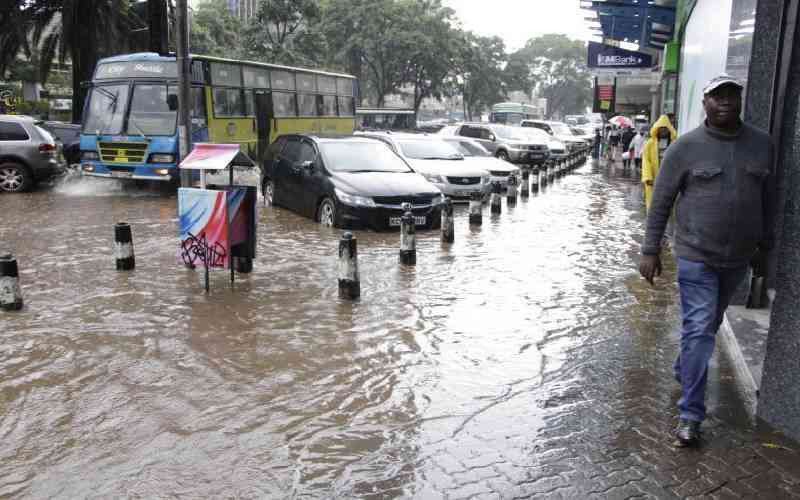By Kipkoech Tanui
The rains haven’t come and we are in May. Farmers in our traditional food basket regions, especially the Rift Valley, have ploughed their farms. Many others have planted but then the crops have not germinated. If they have, then they are withering in the roasting sun and the once-germinating maize now looks like onions.
Back home, I found that the most talked about topic now is rain, especially the question of when it will start. In some areas, communities have resorted to sacred traditional rituals meant to exhort the Almighty to open up the skies. For rain is a matter of life and death, and they know better – a bleak future characterised by a looming catastrophe when they see one.
We shall come shortly to why this is not a mundane or boring subject because we will soon be hearing about severe hunger and starvation in some parts of the country.
Do also factor in the fact that apart from projected poor harvests, especially of maize, which apart from water is the only ingredient for ugali, our staple food, last year and the year before we didn’t do well either because of the highly contagious disease that swept through the food baskets I mentioned earlier.
Then there is the disincentive that comes with poor pricing, high cost of labour and inputs that have depopularised maize growing. In fact, I was stunned by three new developments around the growing of maize. Whereas our appetite for ugali has not diminished, the market for maize is poor and so farmers have shifted to growing, harvesting and then baling animal feeds, especially grass. The argument is that once you plant, it is not as involving to nurture it, and you can harvest thrice a year for three to five years.
Just for you to have an idea of what this means, consider the fact that at Sh220 per bale of hay, you only need to sell between 10-15 to buy a sack of maize during the season of plenty.
I haven’t forgotten that maize is also a key ingredient of githeri, our other delicacy that is paired with beans. In short, again, we are clearly headed for severe food shortages. Let us now go over to the official warning about what the hunger-prone areas of Kenya will be like in about four months.
The Famine Early Warning System Network (Fews Net) has given very serious alerts. First, it says at least 1.3 million Kenyans will be grappling with acute hunger by September due to two direct issues related to each other.
The first one is poor rainfall pattern, which then leads to food scarcity, which automatically then drives the prices of food up.
What Fews Net isn’t telling you is that we are headed into the season when you are told certain communities have resorted to eating rats and dogs, while others dig for plant roots and tubers that in ordinary times are left to rabbits, monkeys and tortoises. To drive the point home, these inedibles must first be made edible because they are basically laced with poison or, like animal skins, they are very hard to chew if not well cooked. And the pot must be on the fire for not less than four hours!
The other thing Fews Net is not telling you directly is that even those not in the traditional hunger belt will be hit hard. This is because it estimates that for 80 per cent of Kenyans the projected food price increases will be ‘stressful’. What this simply means is that they will have to dig deeper into the pocket, which is already sagging because of the high-cost of living and dwindling economic fortunes.
This warning is fodder for businessmen and middlemen who would want to start buying cheaply and then hoard till the crisis strikes and newspapers and television stations start relaying pictures of men, women and children dehumanised and emaciated by famine, and just waiting to die in a country whose national anthem includes the prayer: “…plenty be found within our borders”.
Let us put this on record so that if those at the control wheels of this Government do not heed it, we shall remind them that they were forewarned. The truth is that no Government can make rain and no President can stop famine.
But in the same breath, we know the President, regardless of age, is the Father of the Nation. His work is to ensure that all family members have food and other basic necessities. To manage to take care of all of us, we have given him, and those assisting him to lead us, our taxes.
Stay informed. Subscribe to our newsletter
The country then expects that President Uhuru Kenyatta, his deputy William Ruto, who has several times met the stakeholders in this arena, and others aboard the Statecraft, have found a way to forestall deaths caused by famine. This involves importing food early and setting up distribution and support networks in the vulnerable regions.
It also involves cutting down on unnecessary expenditure in Government so as to save funds to finance the relief operations that we shall soon be grappling with.
Though we live in a free market economy where the private sector will take advantage of shortages and desperate times to make a killing, the President and his team must ensure that this time round, leeches will not be bled to fatten heifers gamboling in high offices across the land.
Over the next few days, some of us expect the President, and the governors, senators and Members of Parliament from the hotspots of hunger and famine, to meet, discuss and announce a strategy that will forestall deaths.
If this does not happen, then we shall all conclude that this Government, though it calls itself ‘digital’ is no different from the past, and so resign ourselves to the usual fate of hoping that down the road, maybe decades later, the one to come will be different, futuristic in thinking and planning, and more sensitive toward the poor.

The writer is Group Managing Editor (Print) at The Standard.
[email protected]
 The Standard Group Plc is a
multi-media organization with investments in media platforms spanning newspaper
print operations, television, radio broadcasting, digital and online services. The
Standard Group is recognized as a leading multi-media house in Kenya with a key
influence in matters of national and international interest.
The Standard Group Plc is a
multi-media organization with investments in media platforms spanning newspaper
print operations, television, radio broadcasting, digital and online services. The
Standard Group is recognized as a leading multi-media house in Kenya with a key
influence in matters of national and international interest.
 The Standard Group Plc is a
multi-media organization with investments in media platforms spanning newspaper
print operations, television, radio broadcasting, digital and online services. The
Standard Group is recognized as a leading multi-media house in Kenya with a key
influence in matters of national and international interest.
The Standard Group Plc is a
multi-media organization with investments in media platforms spanning newspaper
print operations, television, radio broadcasting, digital and online services. The
Standard Group is recognized as a leading multi-media house in Kenya with a key
influence in matters of national and international interest.








